Private collector
Rome, Lazio, Italy
The large bronze sculpture built by John Vassar House (JVH) commemorating the Boston Tea Party is “Square Rigger”, installed in 1974 for the State Street Bank in Quincy, MA. (search “Square Rigger” year 1974).
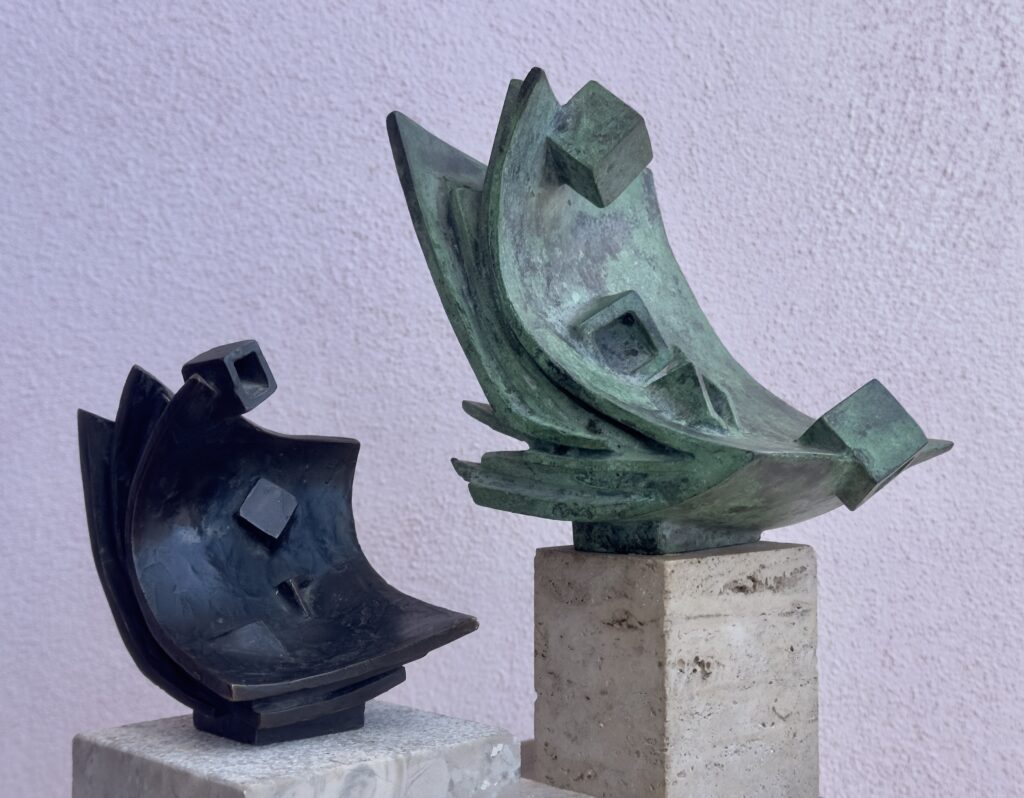
In 1971 sculptor (JVH) created two different wave bronzes named “Boston Tea Party”.
The two “Boston Tea Party” wave sculptures are meant to commemorate the bi-centennial of the protest that took place on Dec. 16, 1773. As you may be aware, on such occasion 3 ships (square riggers for the shape of their sails) carrying cargoes of the East India Company were assaulted when moored in Boston Harbor and their tea crates thrown into the waters.
In JVH’s perspective, the protest of dumping the chests of tea into the waves best represents the commemorative protest. The waves and the sinking chests create a strong representative sculptural movement and form. Both sculptures envisage waves with cubes (crates or chests of tea or simply hollow chests) floating ahead of ripples, swells and curls aiming to represent the destruction of the cargo’s products.
The two models are a unique opportunity for us to understand why and how JVH revisited his work and forms.
This exercise is not a variation of the theme but an interesting substantial change in form, as detailed below.
The Black patina “Boston Tea Party” model precedes the Green patina “Boston Tea Party”.
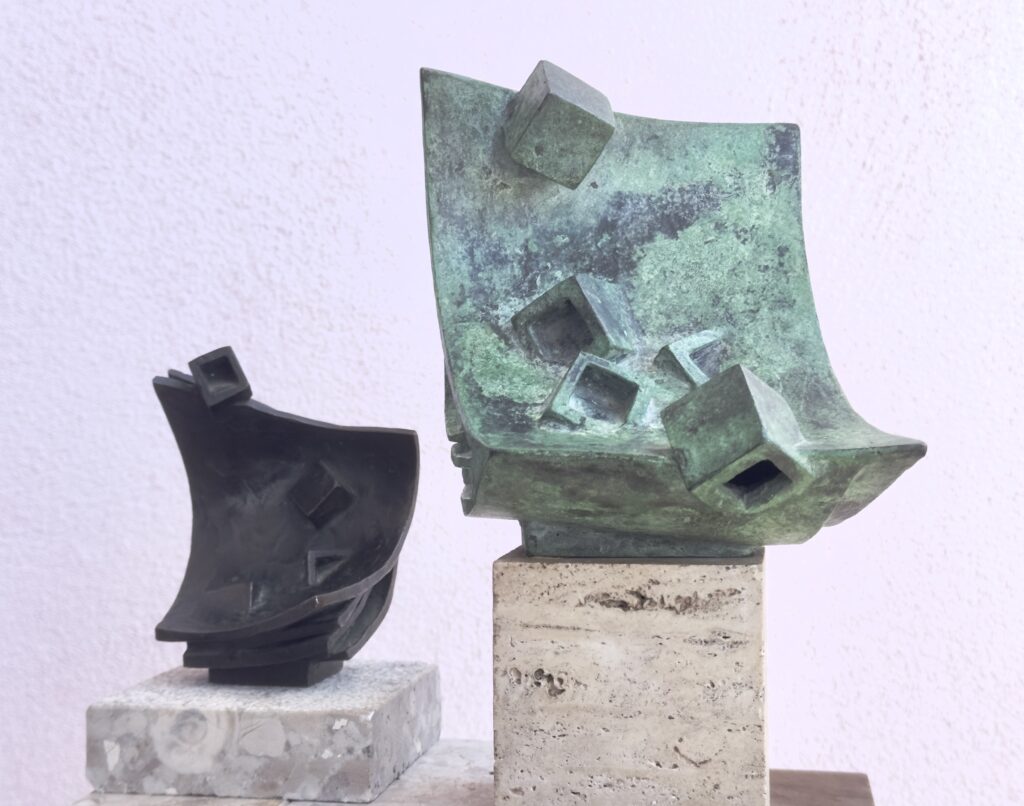
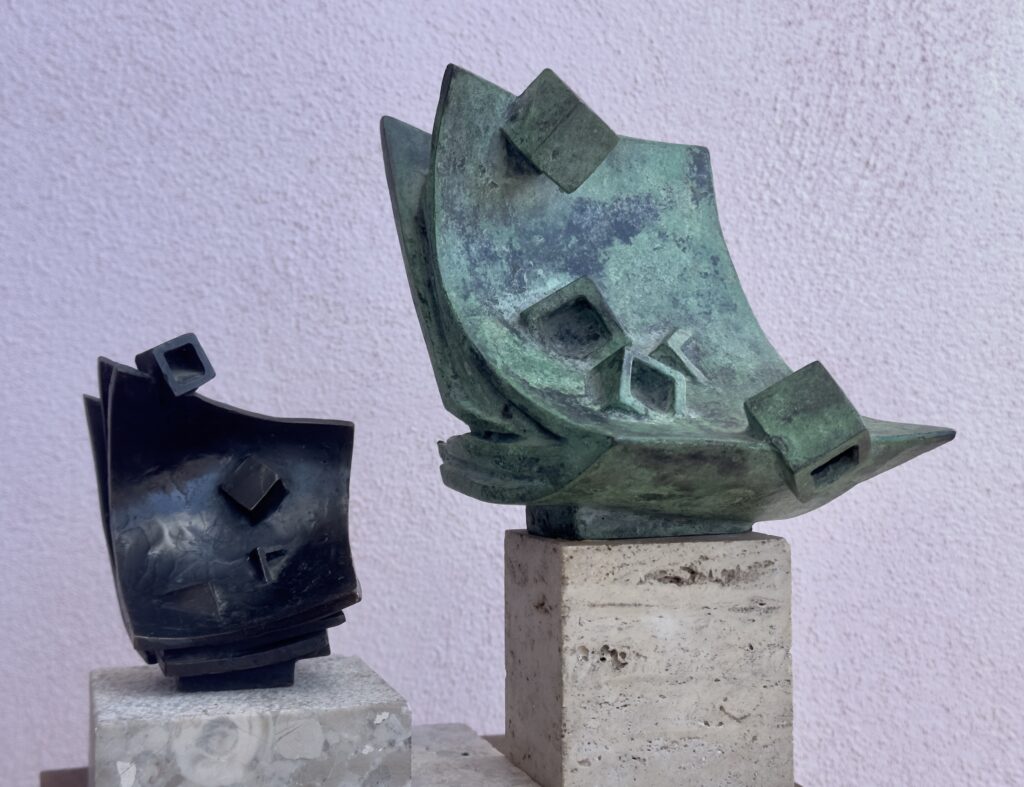
Number of crates (chests)
- Black patina carries 4 crates (chests)
- Green patina carries 5 crates (chests)
Upper position of crates (chests)
- Black patina crate too high, weak
- Green patina crate losing balance towards precipice
Lower position of crates (chests)
- Black patina missing
- Green patina crate is showing emptiness and protruding to fall
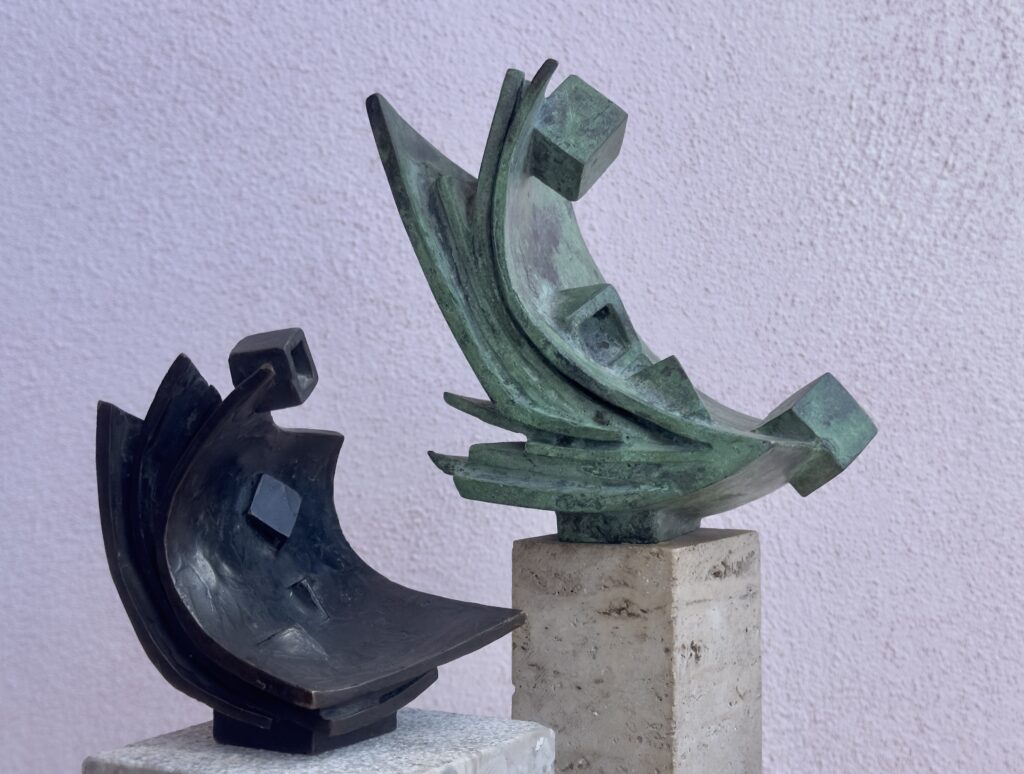
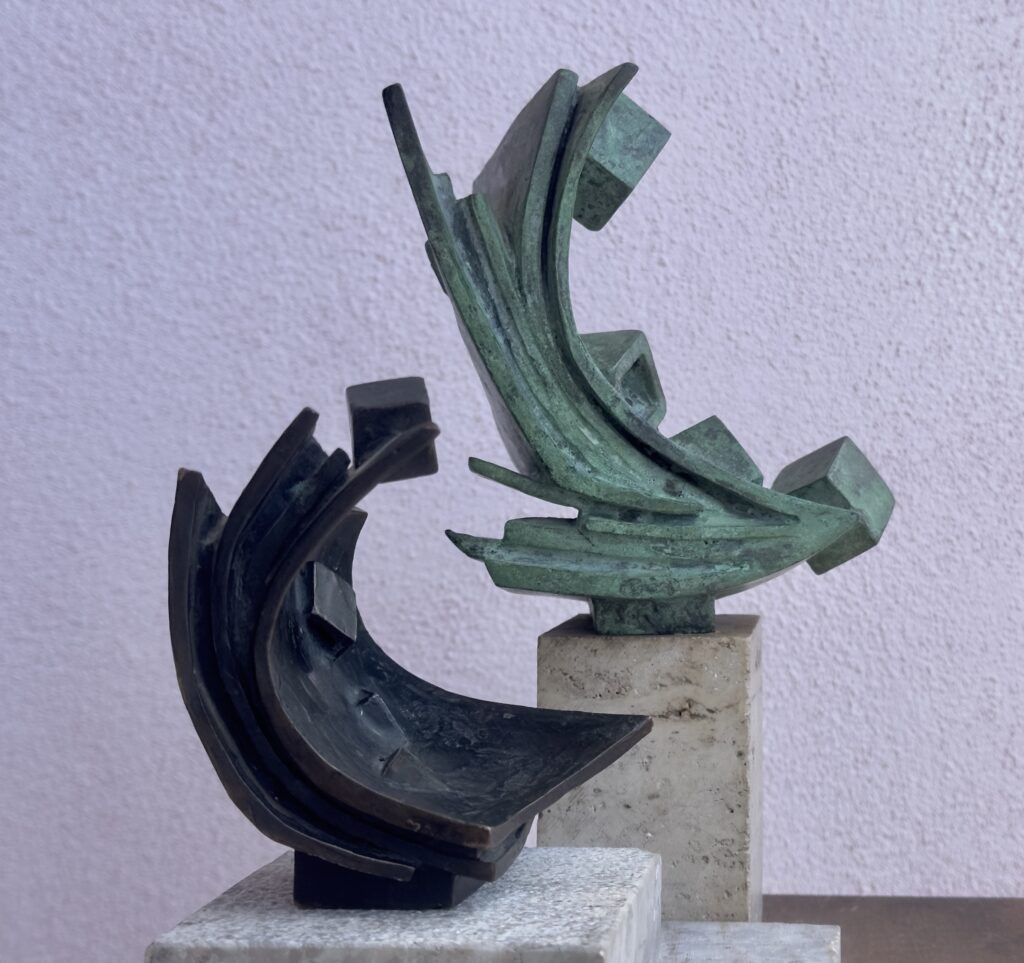
Wave shape
- Black patina wave laminations are thin and very curved
- Green patina laminations create an abstract mass that adds might and a horizontal wedge push

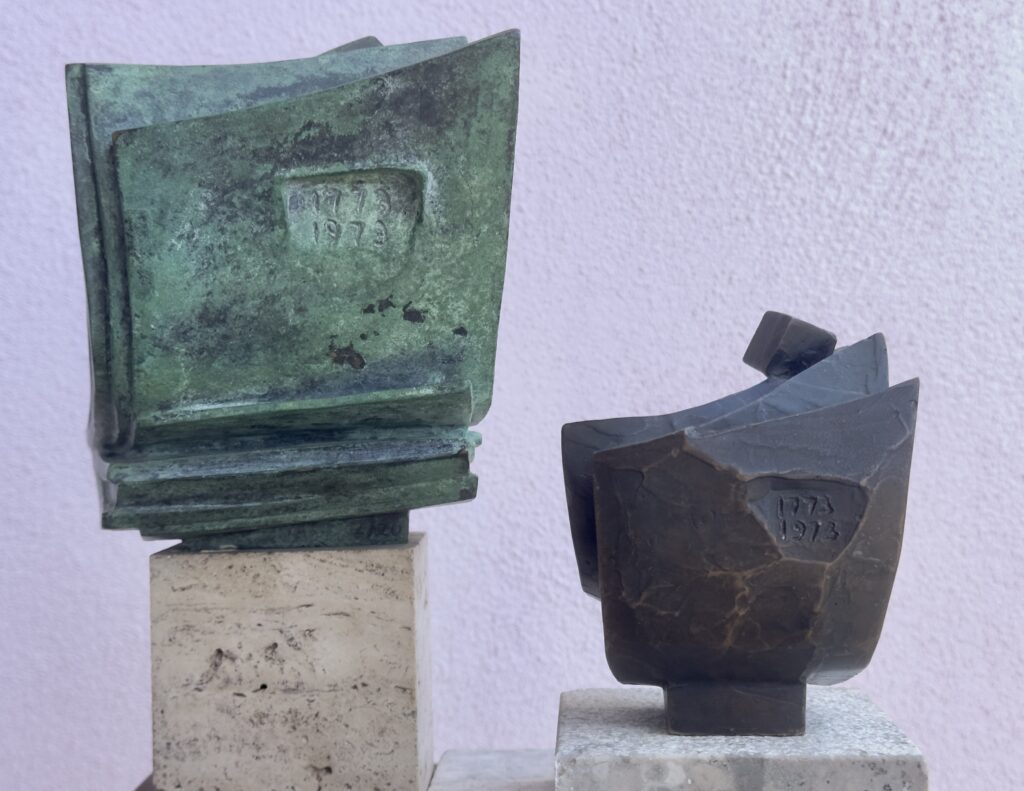
Back of the Wave
- Black patina is elegant and looks like a sail
- Green patina is heavy and overly hefty on the base to emphasize additional lower horizontal push
Wave side movement
- Black patina movement is perceived as decorative
- Green patina the lower wave width is pushing forwards and the side slant is strong, especially from the front


Vertical balance and diagonal movement
- Black patina is elegant and graceful but not powerful
- Green patina shows a number of crates coming at you

